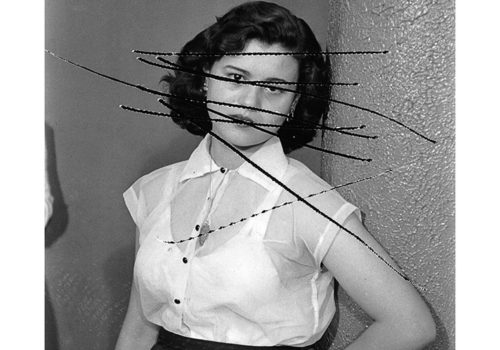The concept of archives is at the heart of the political and artistic activities of Akram Zaatari, co-founder of the Arab Image Foundation (AIF) in 1997, at a time when the spread of public and private collections across the Arab world threatened to erase the region’s visual patrimony.
This Istanbul exhibition, organized by Salt, showcases the diversity of his artwork, which combines video, photography, installation, research and intervention. The layout plays a major role here. It makes the artist’s process – one reminiscent of archeology – intelligible while allowing the viewer to analyze the limits and paradoxes in the act of conservation.
Conceived as an introduction to Zaatari’s work, the first floor of the exhibition juxtaposes two projects under the title, “Acts of excavation and their reverse, archaeology and its opposite,” inspired by the excavation of a letter written and buried during the civil war by Ali Hashisho, an active member of the Lebanese Communist resistance movement.
The first series consists of interviews and video documents letting the viewer follow the excavation mission to the royal necropolis of Saida, in Lebanon, by Osman Hamdi Bey in 1887, and the relocation of its major monument—the Sarcophagus of Mourning Women—to the Istanbul Archaeological Museum.
“Time Capsule,” the second series, is a radical project which aims to preserve the 600,000 photographs in the collection of the Arab Image Foundation. Zaatari has proposed to adopt the solution employed by the National Museum of Beirut during the civil war, when curators placed the museum’s pieces in concrete bunkers to protect them from bombs, and establish a burial plan for the archives of the AIF. This project illustrates the paradoxes peculiar to the cycle of conservation of patrimony: an endless sequence where each act of conversation involves the creation of a new artifact.
The second floor of the exhibition looks at the two photography studio collections Zaatari acquired for the AIF. One belonged to Van Leo, of Cairo, and the other to Hashem el Madani, from the Studio Shehrazade in Saida. This section combines photographic documentation of the studios, film clips shot in Super 8, interviews recorded with a modern camera, and excerpts from original collections damaged by time. All together, the various material point to the inherent anachronism of the act of preservation and offers a study of archiving as much as a study of the archive itself.
The third and final floor would look like the only one devoted to an analysis of archives themselves – an analysis of the codes of male representation in particular – if it weren’t for the video piece “The End of Time”. A touching work, the video depicts the birth and disappearance of desire, echoing that endless sequence of births and deaths – that incessant cycle of re-creation – to which the archive and every produced material is exposed.
EXHIBITION
Akram Saatari
Through February 15th 2015
SALT Beyoğlu
İstiklal Caddesi 136
Beyoğlu 34430
İstanbul – Turkey
T +90 212 377 42 00
















